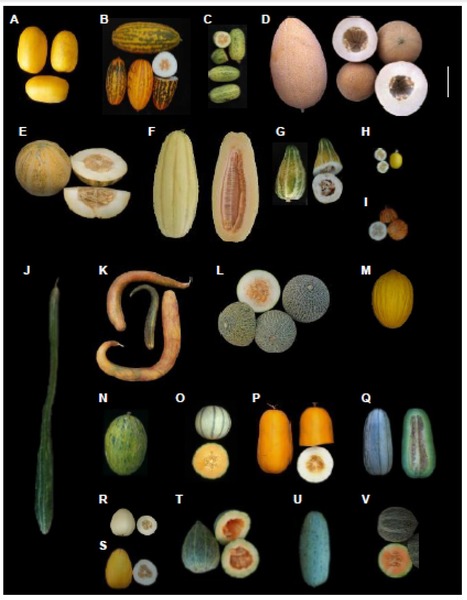Sex determination and fruit shape: only one gene!
Ethylene plays a dual role in sex determination and fruit shape in cucurbits
The shape of vegetables and fruits is the result of adaptive evolution and human selection. Genetic modules controlling the shape of organs have been identified. However, little is known about the signals that coordinate organ development and shape.
In a study published in Current Biology, researchers from the FLOCAD team at IPS2 describe the characterization of the rf1 mutation in melon leading to round fruits. Histological analysis of flowers and fruits revealed that fruit shape is defined after sex determination and before flower fertilization. By combining genetics and genomics approaches, the gene responsible for fruit shape was identified as the CmACS7 gene, also responsible for sex determination in melon. This gene is involved in ethylene production at the level of carpel primordia, thereby increasing cell expansion and repressing cell division, leading to elongated fruit formation.
To identify gene networks controlling the “shape fruit” phenotype, researchers compared carpel transcriptomes obtained using laser microdissection from an elongated or round melon. High-resolution spatio-temporal gene expression dynamics revealed the involvement of two regulatory modules. The first module involves the E2F-DP transcription factors controlling cell elongation versus cell division; the second module involves proteins related to OVATE and TRM5 controlling cell division.
Overall, this study highlights a dual role of ethylene in the inhibition of the development of the stamen and in the elongation of the ovary and of the fruit in cucurbitaceous plants.
The results described in this study are the result of a long collaboration involving the Institute of Plant Sciences Paris-Saclay (IPS2) and the Genetics and Improvement of Fruits and Vegetables Unit of INRAE in Avignon.

